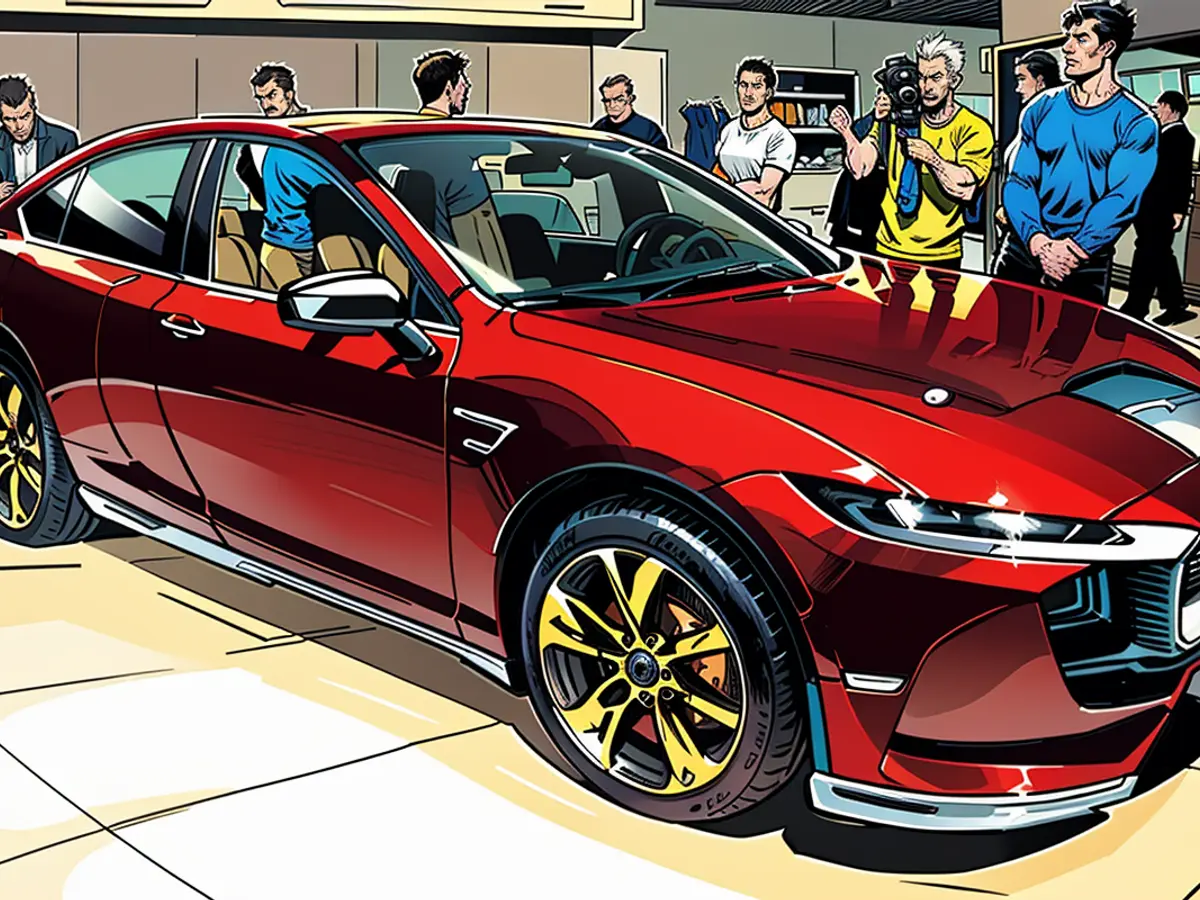Mazda enhances fleet offerings with increased power.
Mazda has been cautious regarding battery electric vehicles, with the only exception being the MX-30. However, the Japanese manufacturer plans to shift its approach in the upcoming year, especially with the help of China.
Regarding electrification, Mazda has been less aggressive compared to other Asian brands. Apart from the MX-30, the Japanese company lacks any electric models in its lineup, and sales have remained low due to the limited 35.5 kWh battery and a range of approximately 200 kilometers. The idea of rightsizing hasn't been well-received by customers.
A Promising Prospect in the Upper Segment
A more hopeful possibility is a fashionable electric sedan in the upper class. It was recently unveiled at the Beijing Auto Show and is the result of a partnership with their Chinese partner, Changan. The 4.9-meter-long EZ-6 is currently being built in China for the Chinese market, at least according to official statements. However, whether the last word on this has been spoken or not is uncertain.
There's a possibility that the EZ-6, an electric successor to the Mazda 6, will be available in Europe relatively quickly in the coming year. The Mazda 6e is being considered as a potential model name, which Mazda has already registered in Europe.
The Changan platform promises a performance of up to 200 kW/272 PS, a battery capacity of up to 80 kWh, and a range of around 550 kilometers. This would put Mazda in a competitive position. On the same platform, a crossover model is also planned - it was showcased in Beijing as the Mazda Arata concept vehicle. The possible market launch: 2026.
Plans for Electric Vehicles on Mazda's Own Platform
Nevertheless, Mazda plans to develop other electric vehicles on its own platform. The platform, called Skyactiv Scalable EV Architecture, might be the first candidate being an SUV in the mid-size category. Debut: anticipated in approximately two years.
In 2027, Mazda's electric range is expected to expand further into the compact segment. The specific bodywork remains speculation. There's a possibility that the designers intend to create something similar to the CX-30. The new model would likely replace the current MX-30.
Possible Retirement of the CX-5?
The CX-5 is set to retire at the end of this year. There are rumors that it will not have a direct successor, resulting in an expensive gap. The CX-5 is currently one of the best-selling models in Mazda's lineup.
The reason for this delay is not clear, as the next CX-5 is set to use the Longitudinal Layout of Mazda's Multi-Solution Scalable Architecture. This platform has been ready for some time and is already used under the CX-60, which is not only Mazda's first plug-in hybrid (PHEV) and the strongest series vehicle ever, but also the only car in the premium segment with a rare inline six-cylinder diesel that is only found in this segment today.
Introducing the Mazda CX-80
The same technology is also used by the CX-80, a new SUV that is being introduced this year. The CX-80 is the largest model in Mazda's European lineup. However, the new CX-5 differs from the CX-60 and CX-80 in one aspect: customers cannot choose a PHEV, but they can probably opt for a full hybrid designed by Mazda. Mazda announced the development of this vehicle in November 2022.
Mazda's engineers are currently focusing on finalizing the full hybrid, which has great CO2 savings potential in volume segments. It's quite possible that the HEV (Hybrid Electric Vehicle) will first take form as a cross-over installation in the Mazda 3 and the identical CX-30 in the middle of the decade. Both models will run beyond their original lifecycle for a few more years, but they'll be kept fresh through product improvements, particularly in terms of connectivity and digitalization - not so much in terms of design, which has a rather timeless appearance.
This year, the Mazda 3 and CX-30 may receive a new gasoline engine. A 2.5-liter four-cylinder mild hybrid will replace the older 2.0-liter counterpart. Additionally, the Skyactiv-X engine with 137 kW/186 PS and special compression ignition, a unique combination of a gasoline engine and the self-ignition principle of a diesel, will remain in the lineup.
The production of the small car, Mazda 2, will come to an end this year. In the B-segment, Mazda will only have the hybrid version from the cooperation with Toyota left.
On the other hand, the cult sports car MX-5 will continue to be produced. The electric strategy, involving the Changan platform and Mazda's own EV architecture, won't affect it at all. The MX-5 recently received an update, and its end is not in sight. Mazda is considering developing a new version, which would be the fifth since 1989. The first hints about the design could originate from the study "Iconic SP," which was presented at the Tokyo Motor Show last fall.
Read also:
Mazda's strategy for electromobility is set to change significantly, as they plan to introduce more electric models in the upcoming year, with potential assistance from Chinese carmakers. Despite being cautious about battery electric vehicles, Mazda currently only offers the MX-30 as an electric model, which has limited range and sales due to its small battery.
In addition to its own electric vehicle development, Mazda is also partnering with Chinese carmaker Changan to produce an electric sedan in the upper class. This vehicle, which could be named Mazda 6e, is expected to have a powerful electric motor and a long range, making Mazda competitive in this segment.
Mazda's electric range is also expected to expand into the compact segment in 2027. The new model could be similar to the CX-30 and would likely replace the MX-30.
Japanese carmakers, including Mazda, have been less aggressive in electrification compared to Chinese carmakers. However, with the growing demand for electric vehicles, Mazda is shifting its strategy to stay competitive in the automobile industry.








